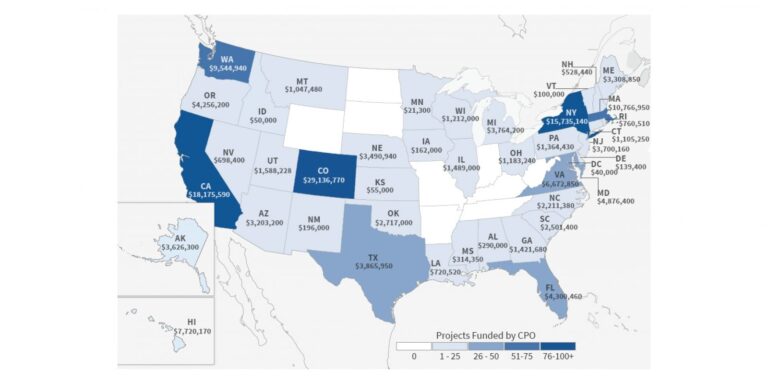The National Oceanic and Atmospheric Administration’s (NOAA) Climate Program Office (CPO) has announced a total of US$48.7m in funding to support a total 79 projects aimed at improving the USA’s resilience.
“Every day, communities and businesses grapple with challenges due to climate variability and change,” said Wayne Higgins, CPO director. “From using machine learning to develop critical atmospheric data sets to creating an experimental system for rapidly assessing causes of extreme events, these new awards will expedite climate science discoveries and build the library of resilience solutions needed to protect all sectors of our economy and environment.”
Over the next one to four years, universities, research institutions, and agency partners across every region of the contiguous USA and Hawaii will conduct the projects in close partnership with NOAA labs and centers.
Through collaborations that leverage resources from the broader scientific community, NOAA says the new awards will help tackle challenges in many areas of climate science. Such areas include weather and climate extremes, drought and water resources, changing atmospheric composition and its impacts, and important issues for the blue economy – coastal resilience and sustainable fisheries under a changing climate.
“These projects bring a wealth of external experts with unique skills to NOAA and will explore new frontiers that significantly expand the reach of our mission,” said CPO deputy director Ben DeAngelo.
Last year, CPO’s program managers issued a call for projects in new topic areas to meet the growing climate information needs of a resilient society. With panels of experts, they selected the 79 projects through an open, competitive peer-review process, ensuring that CPO brought the finest new research to NOAA and maximized outcomes.
Some of the anticipated outcomes from the projects include a reduction uncertainty around future climate projections, improved understanding of climate impacts on marine ecosystems, advanced ability to anticipate US droughts, new atmospheric measurements of urban areas across the country, and enhanced capacity to support adaptation and resilience in all US communities and regions.



